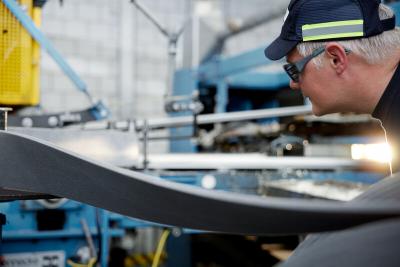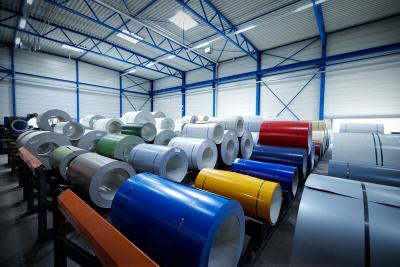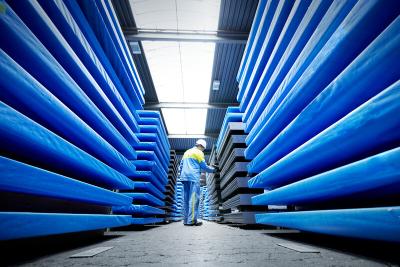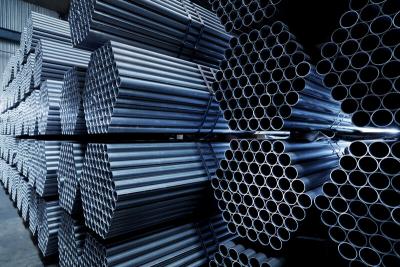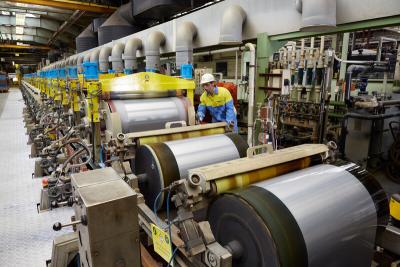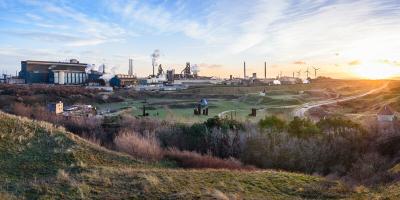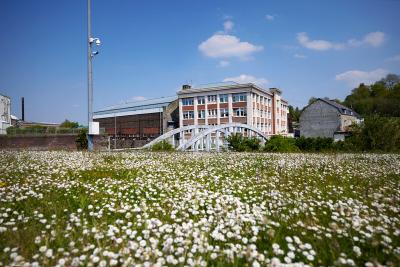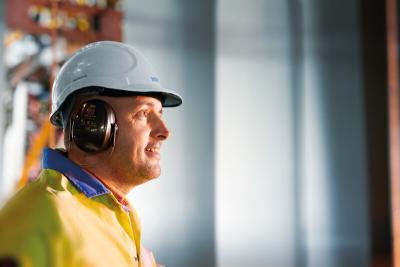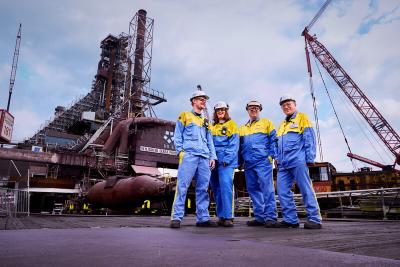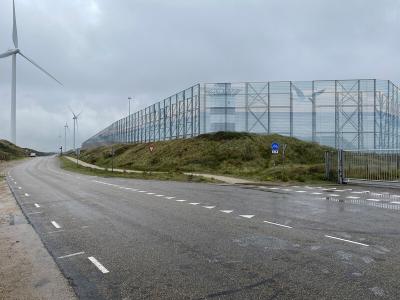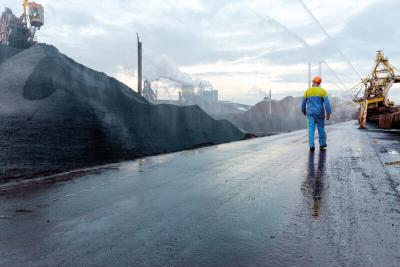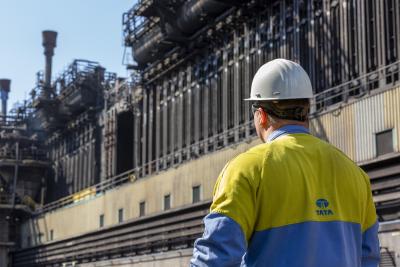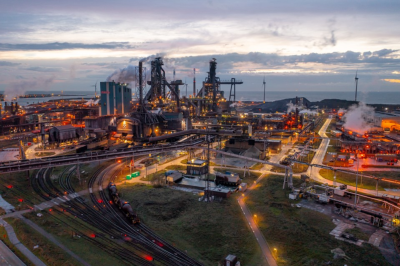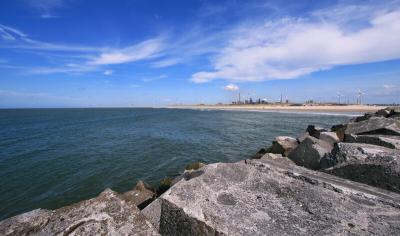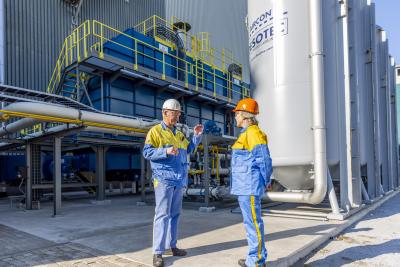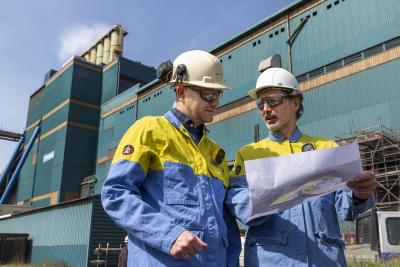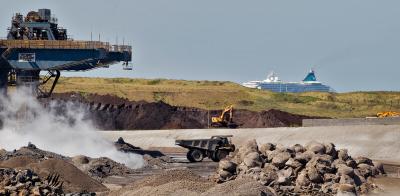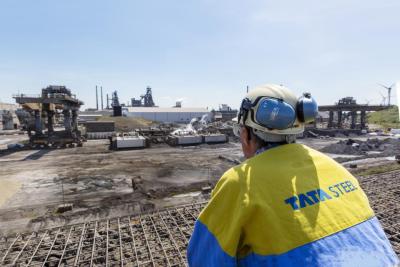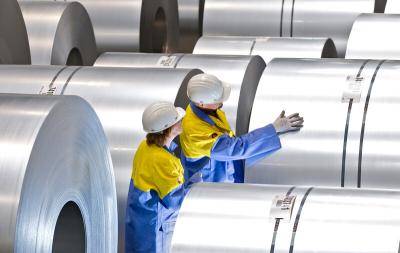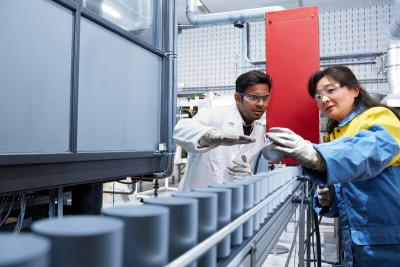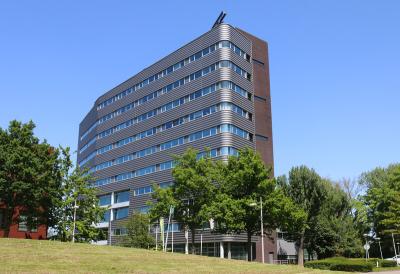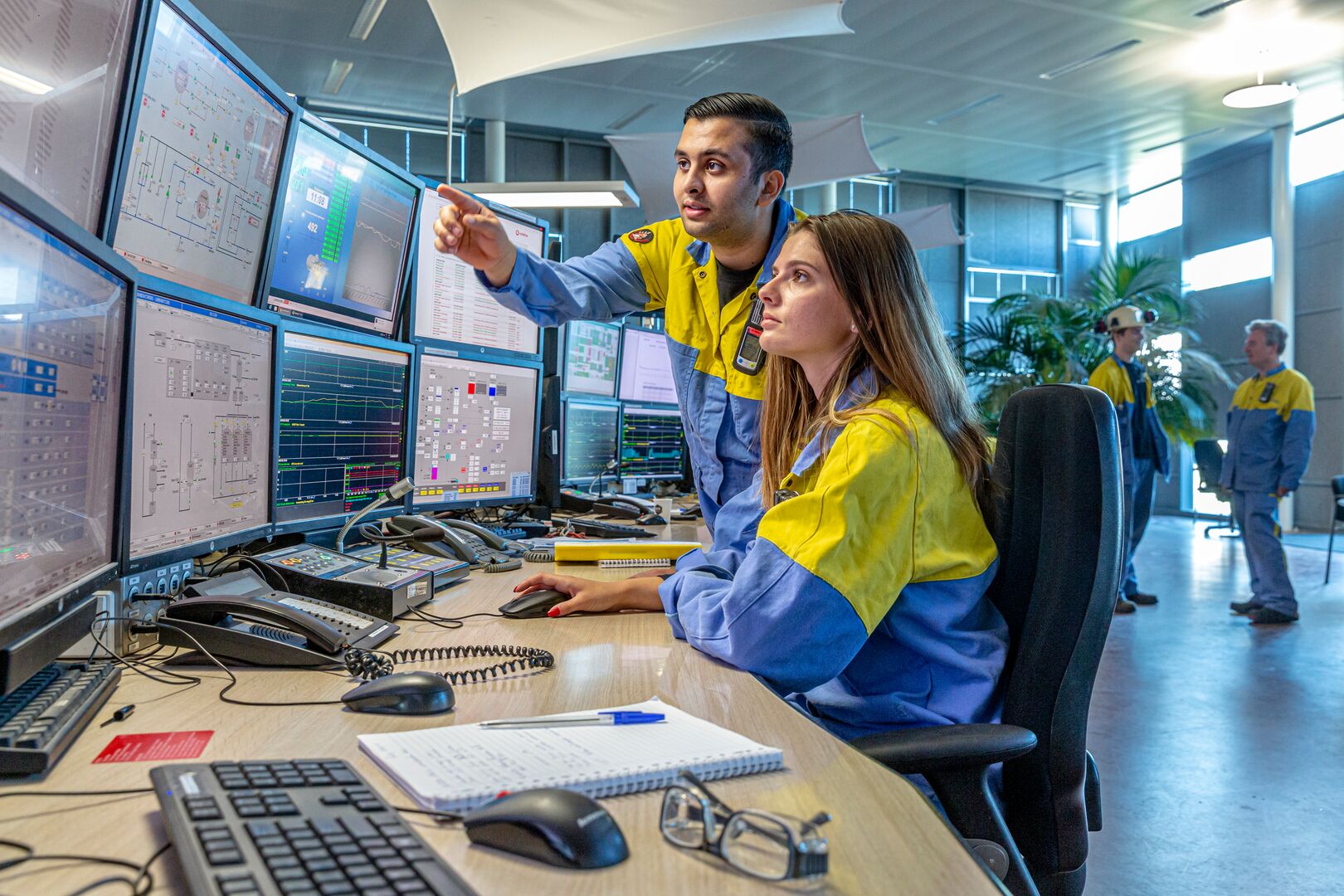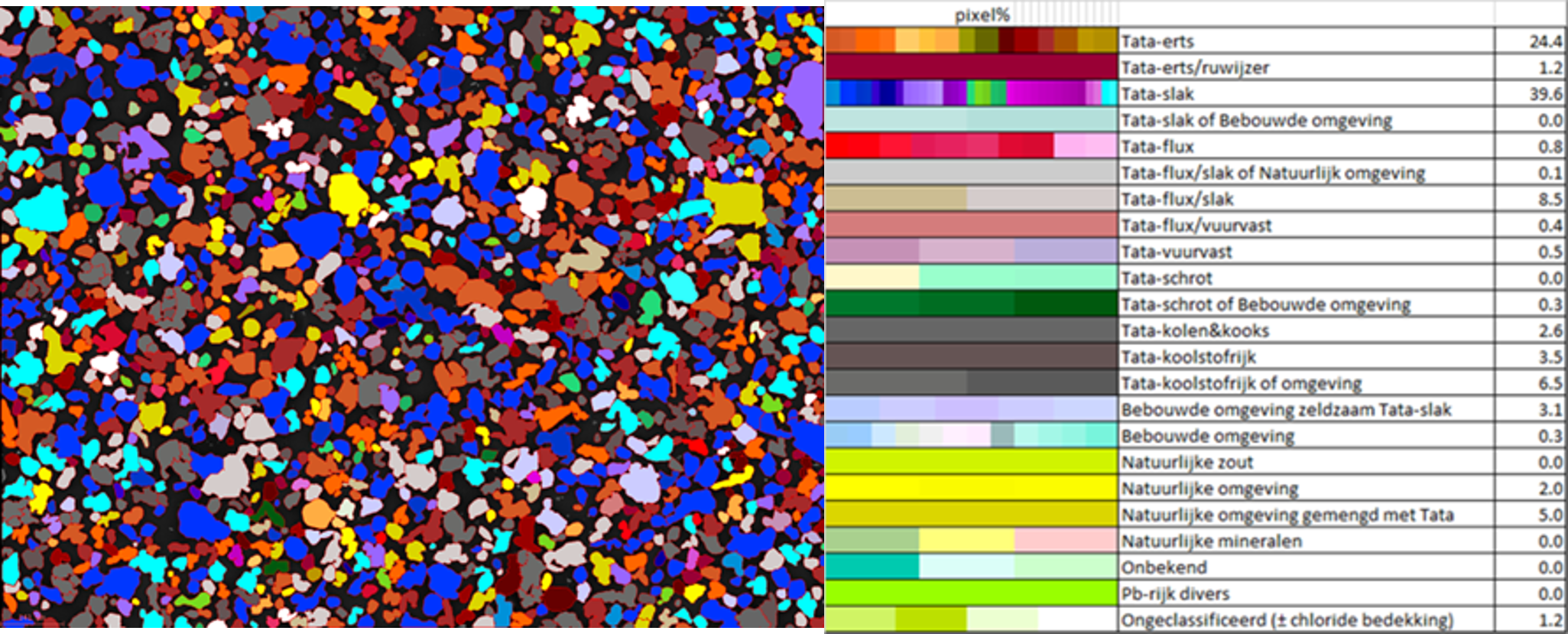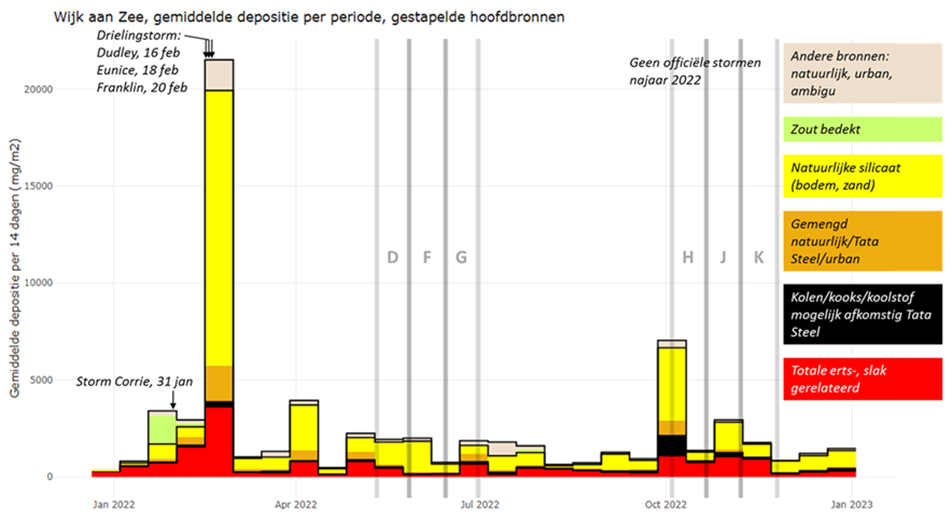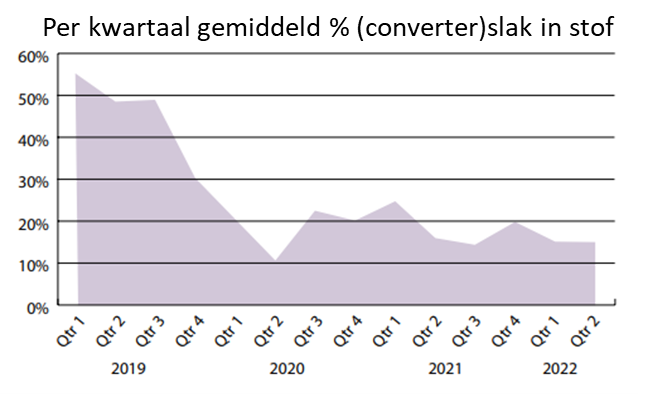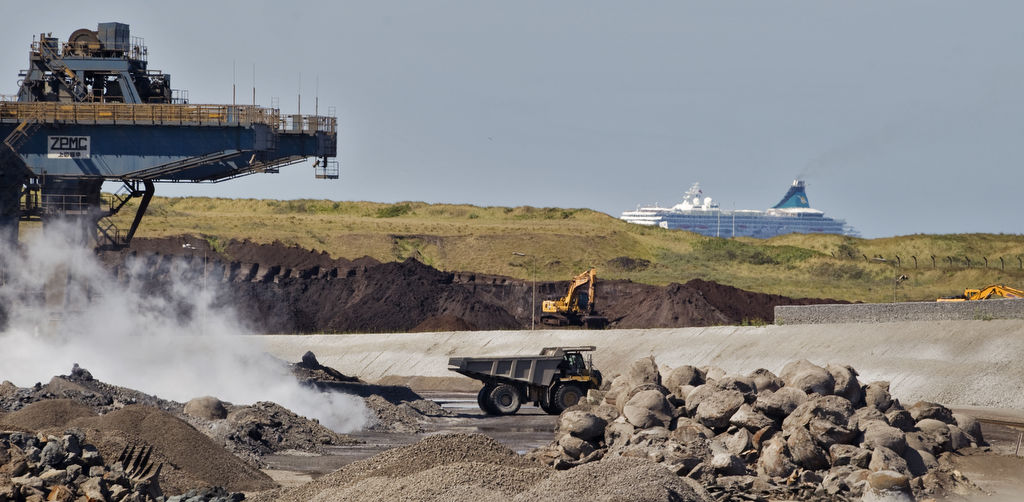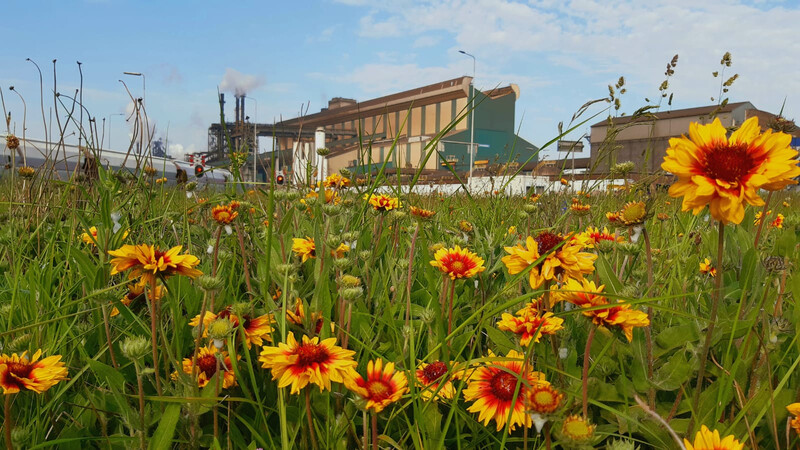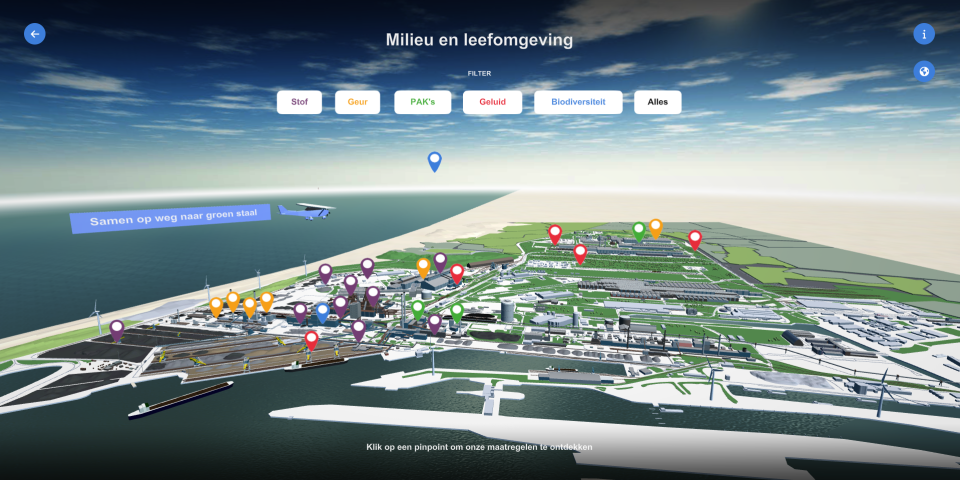In December 2021, in collaboration with TNO, we started continuously measuring dust precipitation (dust deposition) at various locations in the area. We have samples taken every two weeks, in the same manner as RIVM does this. We then use sophisticated technology - electron microscopy in combination with an analysis technique - to identify the possible sources of the dust found in the living environment (dust deposition). The identification of dust sources in IJmond has so far only been done by Tata Steel. For this, we have filled a database with substance analyses from various individual sources on the Tata Steel site. This helps us recognise these types of dust particles in deposition samples from the area around the site. The different dust particles in the recorded microscopy image all get a colour, depending on their source (for illustration, see the picture below of a dust sample with a particularly large proportion of recognisable dust from the Tata Steel site). That also enables us to measure how much of each dust source is in a sample percentage-wise.
We have applied this measurement technique (published in peer-reviewed specialist literature) to approximately 400 dust complaint samples since the beginning of 2019 and to more than 300 samples from regular dust deposition monitoring as part of the Roadmap Plus programme since the beginning of 2022. This helps us paint an increasingly clear picture of the deposition of various dust sources. For the dust complaint samples, we look at the relative contributions (percentages and ratios) of various sources of dust nuisance when this has been reported to us. With the Roadmap Plus monitoring we go a step further and also measure how much mass of dust settles over a certain period of time in absolute terms, so that we can look much more objectively at deposition and how that changes over time for each location.
Figure Microscopic image substance analysis. By way of illustration, here is an image of a dust sample with a particularly large proportion of recognisable dust originating from the Tata Steel site. This allows you to clearly see which sources we can trace.
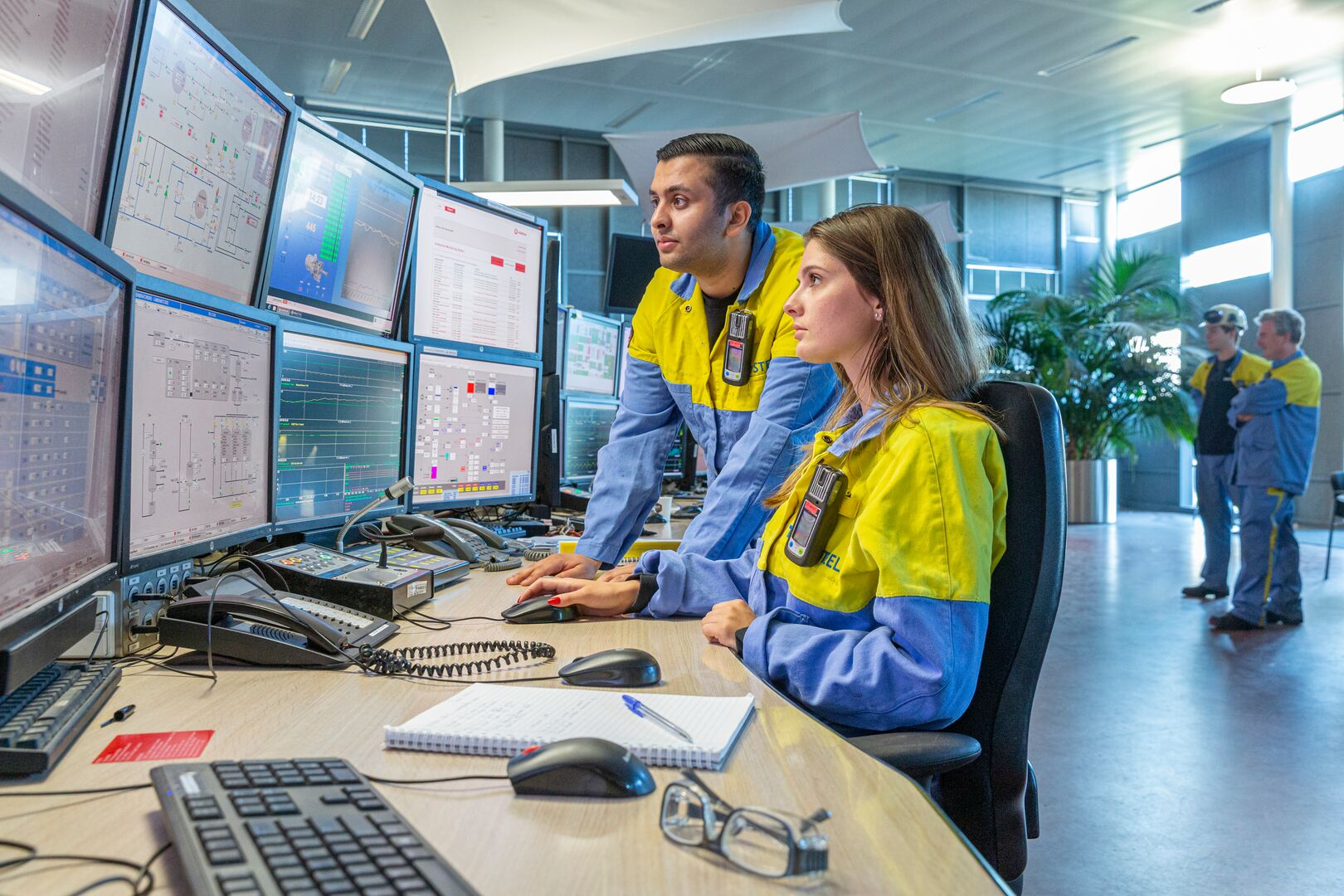
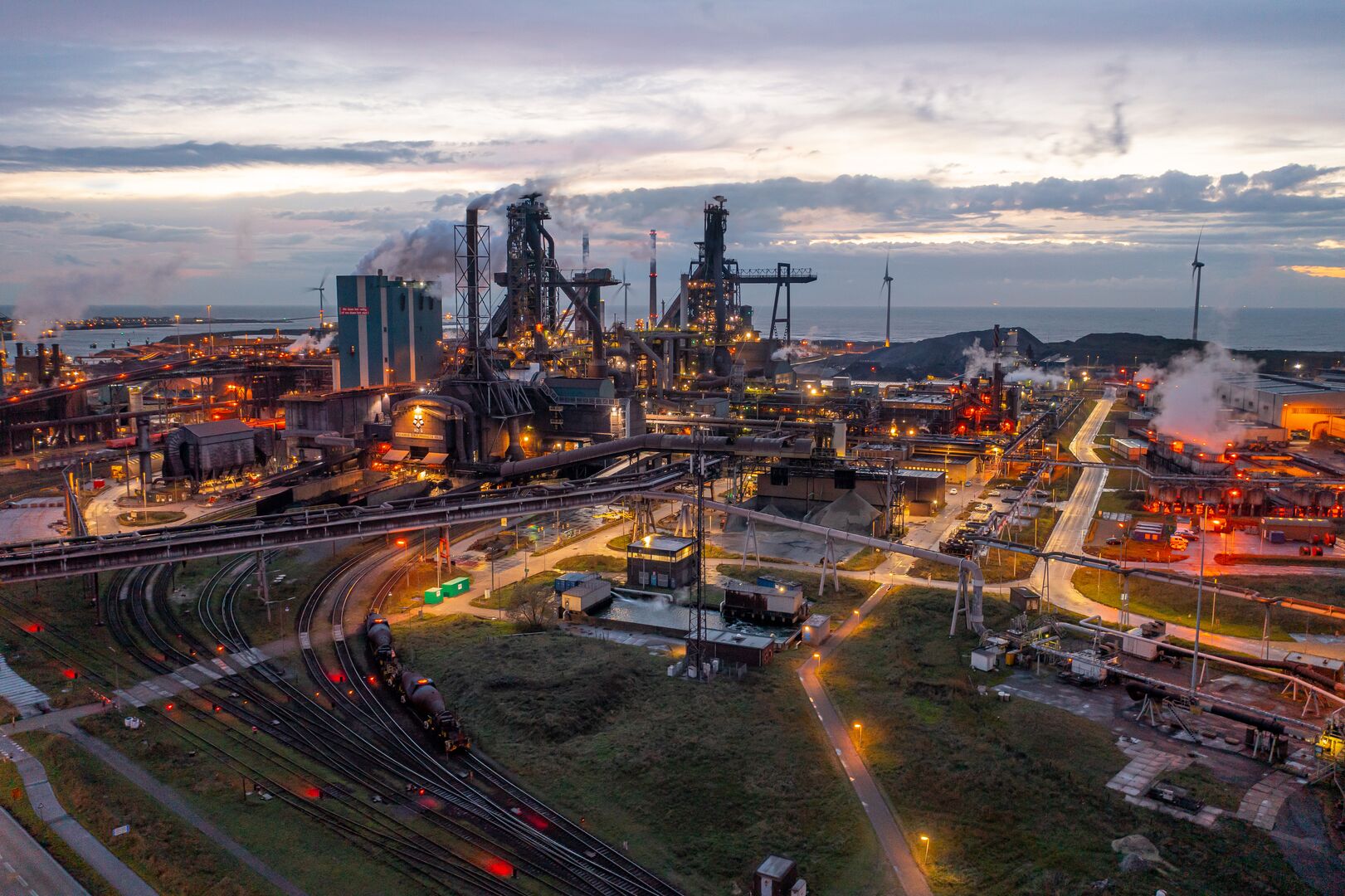
Click to enlarge
This graph shows the average dust deposition of three measuring locations in Wijk aan Zee. The graph gives a grouped representation of the distribution of the origin of the dust that we find in our environment. The width of the columns represents the biweekly measurement period during which dust is collected. The height of the columns represents the amount of dust that fell into the receptacles during that period. The dust types are grouped for convenience and represent the origin of the dust source: red/black is mainly a source from our site, orange for mixed sources, green for salt, yellow for soil/sand sources and beige for other environmental sources. RIVM conducted a total of three measurement campaigns, with each measurement campaign covering three periods of 17-18 days each. The last two RIVM measurement campaigns in spring & autumn 2022 are shown in grey as DFG and HJK.
RIVM measures the deposition of elements such as iron, manganese and vanadium, but not the total quantities of substances or those of individual sources of substances. We find more dust deposition related to sources on our site in the periods where RIVM measured in the autumn of 2022 (HKJ) than in the spring (DFG). This is consistent with RIVM's view that there was more deposition of iron, manganese, vanadium and chromium in that period—elements that we know are related to sources on our site, such as iron ore and slag. Higher dust deposition from these dust sources in 2022 was only measured in Wijk aan Zee during the storm season in the spring with our own monitoring. The measurements show that the amount of dust deposited is dependent on the weather; we also find more dust in that measurement period during storms or strong winds. With a whole calendar year of measurements, it is clear that there is a great deal of fluctuation in dust deposition and that it takes a long time to measure to see structural changes. That is why we started this continuous monitoring of dust deposition. We will continue to do this so that we also gain more insight into the effectiveness of measures taken to reduce emissions and the impact on the living environment.
Analyses of dust complaint samples show that, with the Roadmap (the predecessor of Roadmap Plus), we have already taken a big step in the field of slag dust. Sample analyses show that the proportion of slag dust in the environment has decreased structurally, from 50% in the first half of 2019 to on average below 30% per quarter thereafter.
The fluctuations between quarters can partly be explained by individual incidents, but are largely due to the change in seasons: there appears to be a higher average share of blown-up natural soil material in dust complaint samples in the warmer months (Q2 and Q3) than in the colder months (Q1 and Q4).
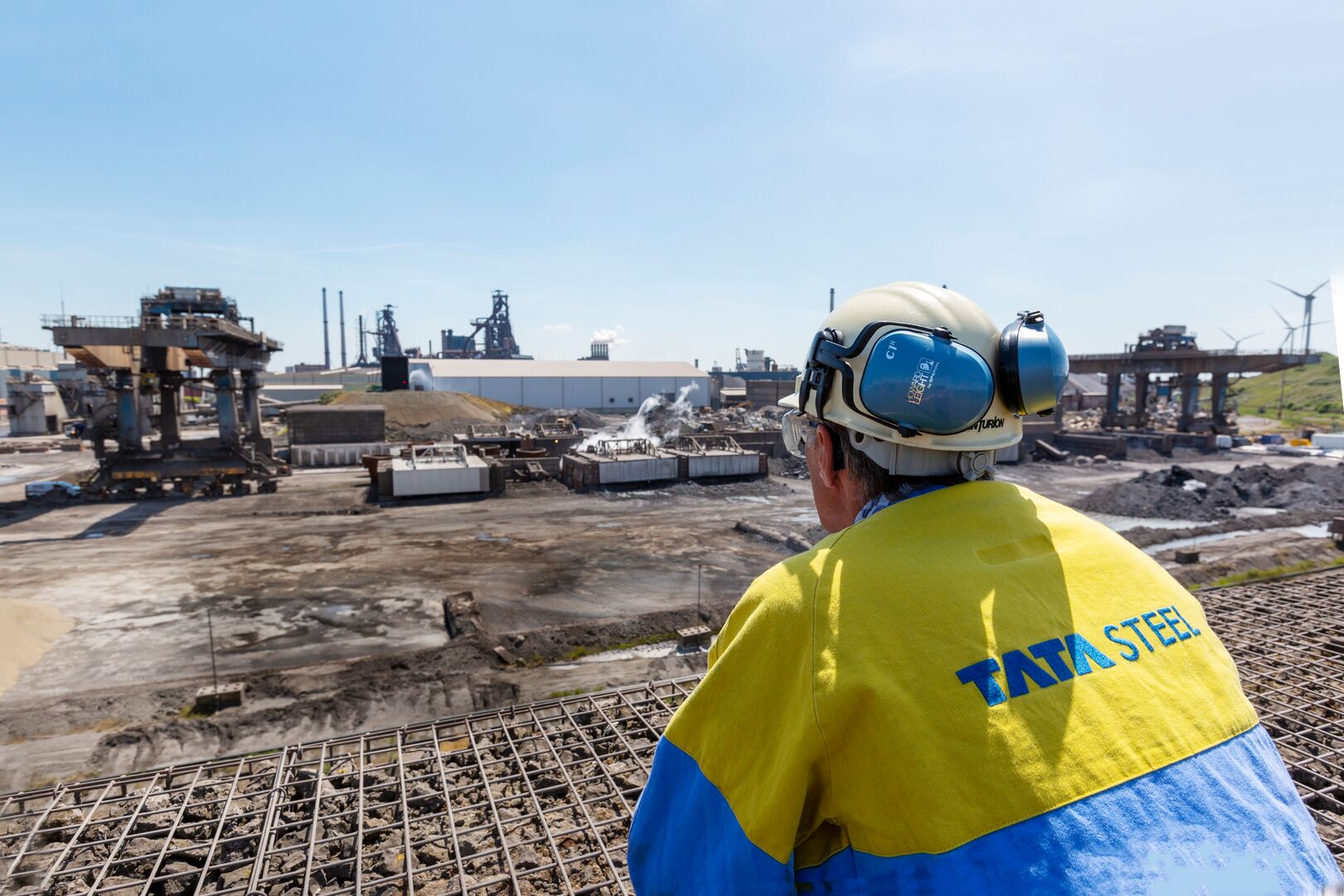
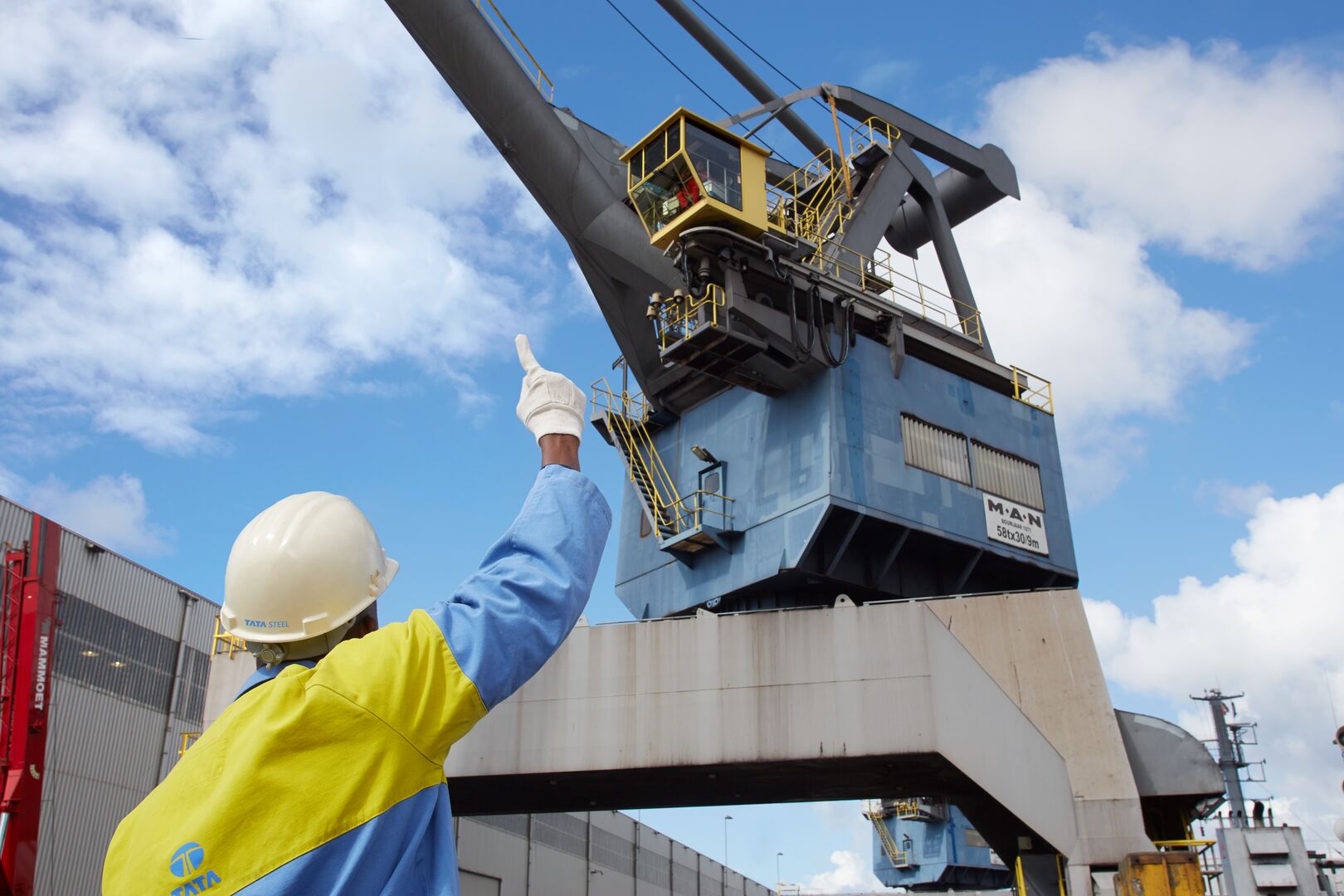
We will continue to develop dust sample analyses and gain further insights—from dust complaints, reference materials from various processes and points on the Tata Steel site, and the Roadmap Plus regular deposition monitoring. With retroactive effect, we can also extract more and more useful information from the samples that have already been taken and measured, for example to be able to better distinguish the sources and thus take even more targeted measures to reduce nuisance.
We want to reduce dust deposition in Wijk aan Zee from sources on our site by approximately 65%. We will do this by, among other things, placing a large windbreak (nl) around the storage facilities and reducing dust drift at the bunkers of the Blast Furnaces and the supply route to them.



